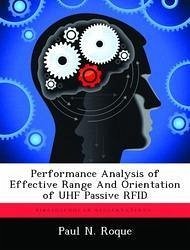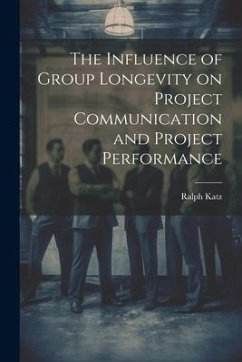
Performance Analysis of Effective Range And Orientation of UHF Passive RFID
Versandkostenfrei!
Versandfertig in über 4 Wochen
15,99 €
inkl. MwSt.

PAYBACK Punkte
8 °P sammeln!
The purpose of this research is to characterize the performance of UHF passive RFID tags. Factors of importance are the impact of tag orientation and distance from the RFID reader. Within this study, a comprehensive literature review of RFID technology is presented as well as the methodology used for the research. Furthermore, an analysis of RFID tag experiments is discussed and the results reviewed. To accomplish this task, two main objectives have been established as goals for the study. The first objective is to determine an optimum tag orientation within the RFID reader's normal read range...
The purpose of this research is to characterize the performance of UHF passive RFID tags. Factors of importance are the impact of tag orientation and distance from the RFID reader. Within this study, a comprehensive literature review of RFID technology is presented as well as the methodology used for the research. Furthermore, an analysis of RFID tag experiments is discussed and the results reviewed. To accomplish this task, two main objectives have been established as goals for the study. The first objective is to determine an optimum tag orientation within the RFID reader's normal read range. Once the optimum tag orientation is determined, the orientation is used to perform range variation tests. The end goal of these tests is to find the maximum range at which the tags are readable under normal conditions using standard equipment. Grasping an idea of RFID tag boundaries contributes to the security and privacy of the technology. This is extremely important as RFID tags are becoming the logistical tool of choice for Department of Defense (DoD) supply chains. This fundamental study creates a foundation that may support both offensive and defensive oriented research. By understanding tag weaknesses and strengths, users of the technology can make sound decisions that lead to the protection of valuable information and assets. This work has been selected by scholars as being culturally important, and is part of the knowledge base of civilization as we know it. This work was reproduced from the original artifact, and remains as true to the original work as possible. Therefore, you will see the original copyright references, library stamps (as most of these works have been housed in our most important libraries around the world), and other notations in the work. This work is in the public domain in the United States of America, and possibly other nations. Within the United States, you may freely copy and distribute this work, as no entity (individual or corporate) has a copyright on the body of the work. As a reproduction of a historical artifact, this work may contain missing or blurred pages, poor pictures, errant marks, etc. Scholars believe, and we concur, that this work is important enough to be preserved, reproduced, and made generally available to the public. We appreciate your support of the preservation process, and thank you for being an important part of keeping this knowledge alive and relevant.












